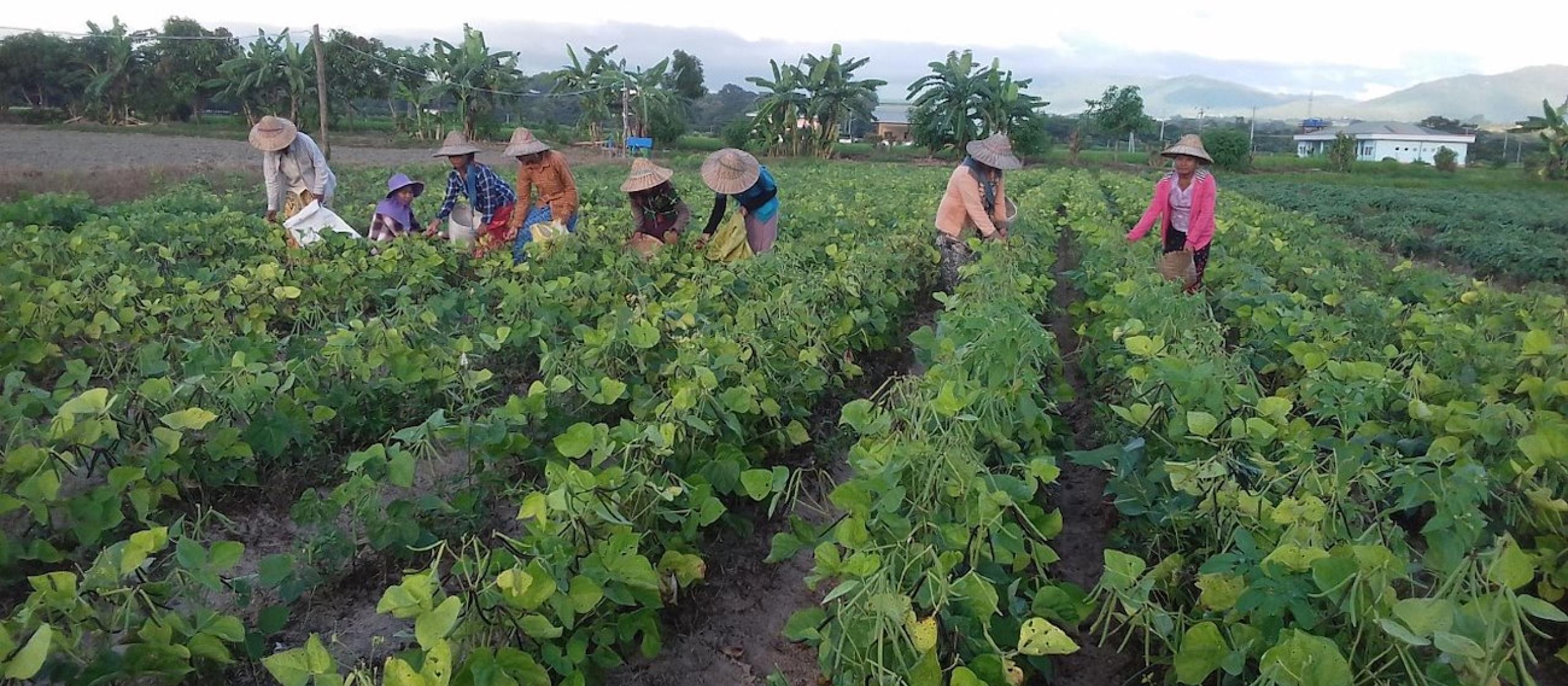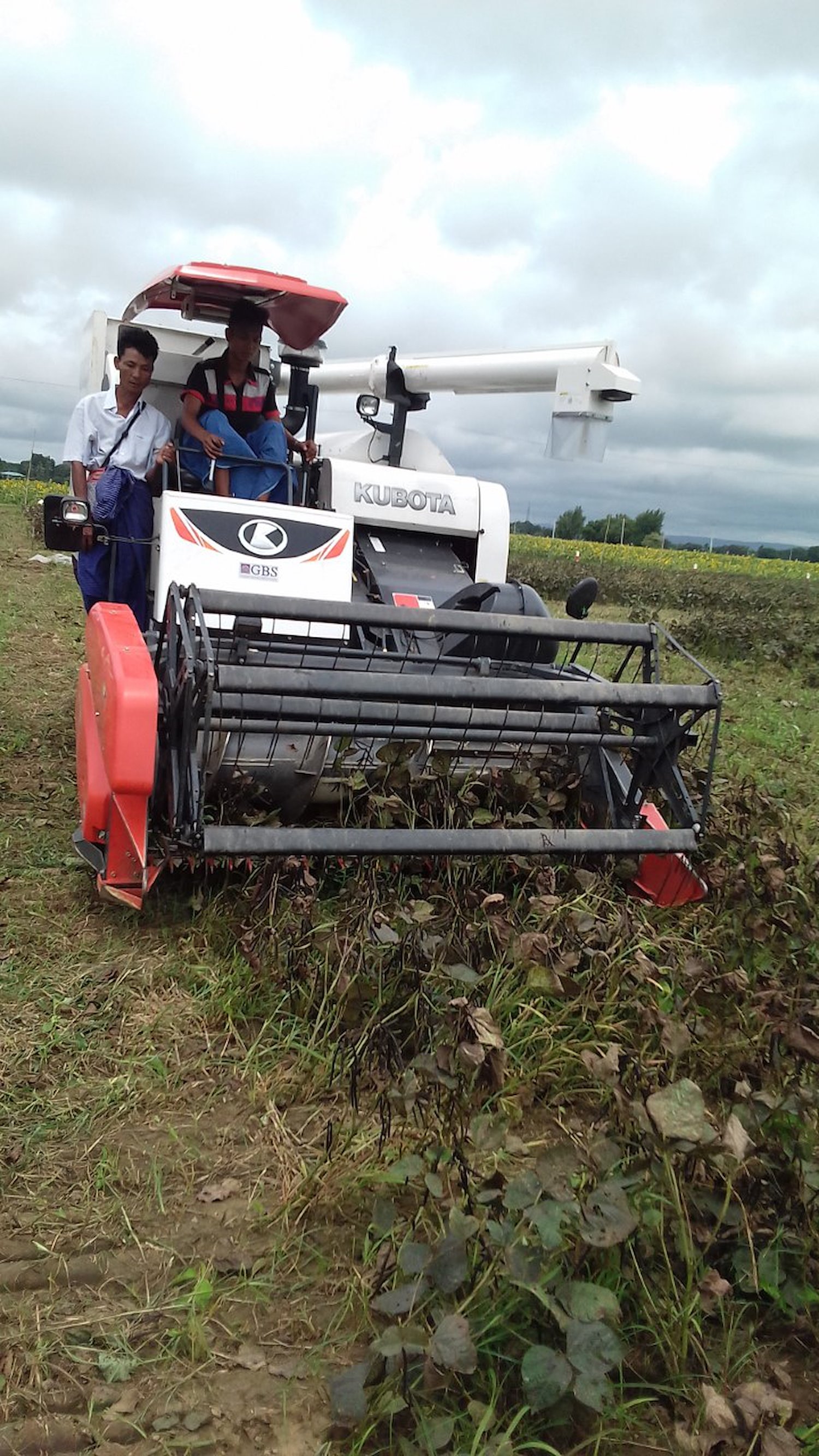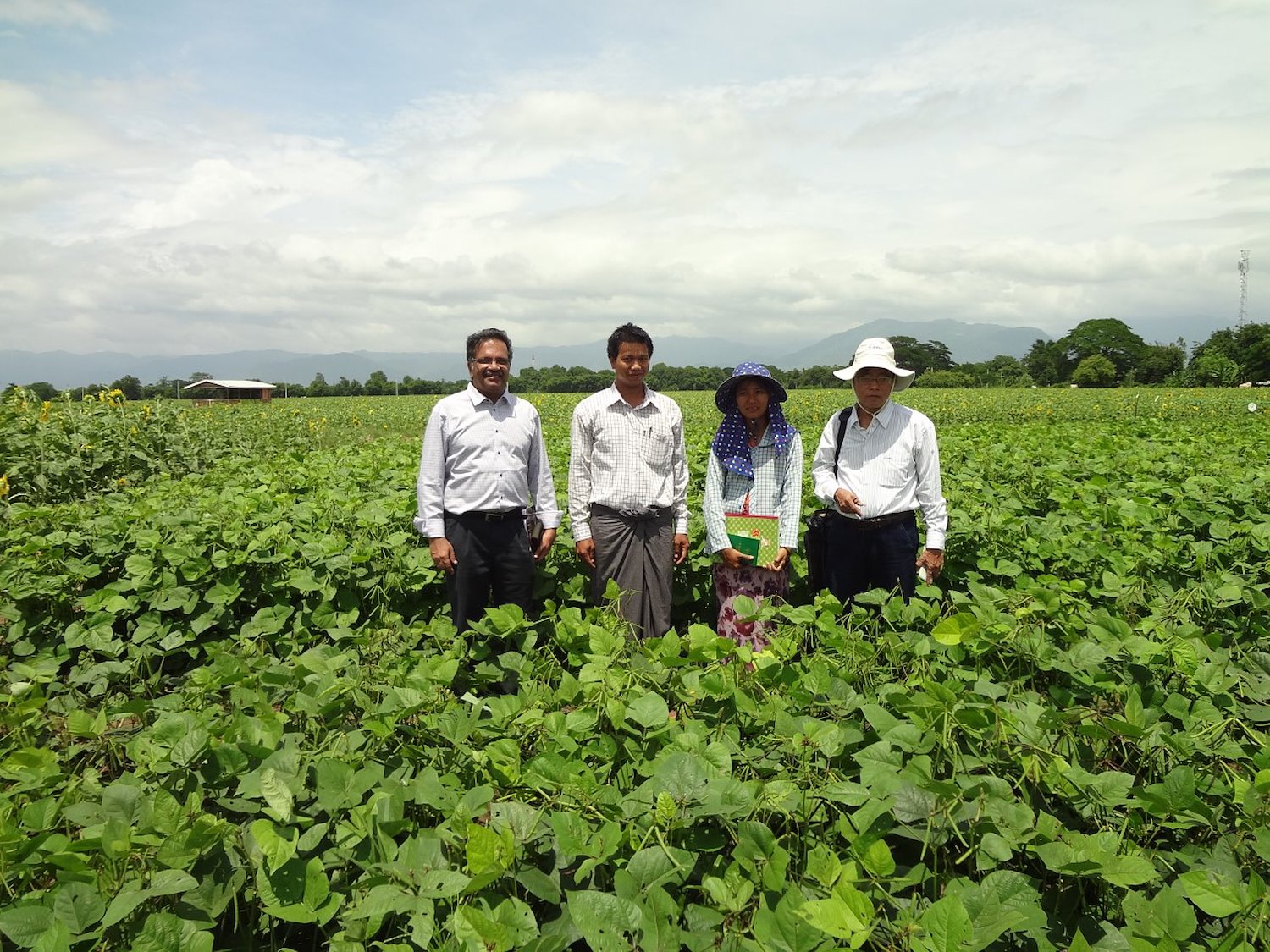- HomeHome
-
About ACIAR
- Our work
- Our people
-
Corporate information
- ACIAR Audit Committee
- Commission for International Agricultural Research
- Policy Advisory Council
- Agency reviews
- Executive remuneration disclosure
- Freedom of information (FOI)
- Gifts and benefits register
- Information publication scheme
- List of new agency files
- Contracts
- Legal services expenditure
- Privacy impact assessment register
- Commonwealth Child Safe Framework
- Benefits to Australia
- Careers
- 40 years of ACIAR
-
What we do
- Programs
- Cross-cutting areas
- Resources
- Where we work
-
Funding
- Research projects
- Fellowships
-
Scholarships
- John Allwright FellowshipScholarships to study in Australia for ACIAR partner country scientists to have Australian postgraduate qualifications
- ACIAR Pacific Agriculture Scholarships and Support and Climate Resilience Program
- Alumni Research Support Facility
- Publications
- News and Outreach
Date released
25 March 2020
ACIAR-funded research promises to help Myanmar, Bangladesh and Pakistan mungbean growers modernise production practices and improve incomes. At the same time, it may help Myanmar find more suitable varieties for Europe’s lucrative ‘sprout quality’ mungbean market.
Mungbean is prized in Asia’s rice-based rotation farming systems for good reason. As a crop it is drought-tolerant, fast-growing, requires little fertiliser input and provides additional income for farmers during the rice-fallow season. Being a legume, it improves soil nitrogen content for subsequent rice crops.
In human diets, mungbean is a good source of protein, iron and other nutrients. The dried seed is a staple ingredient used in different versions of dahl or bean stew in Asian countries; the processed flour and paste is used in noodles and sweet and savory snacks; and the sprouts are a sought-after ingredient in both eastern and western kitchens.
Its resilience and versatility mean mungbean can be grown in different environments for a range of end-uses. In India, Bangladesh and Pakistan mungbean—also known as green gram—is a nutritious supplement to the staple grain, rice.
In Myanmar, on the other hand, mungbeans are increasingly being grown as a cash crop for export, particularly in the drought-prone Central Dry Zone (CDZ), which produces half the country’s pulse and oilseed legumes. In fact, for smallholder farmers in Myanmar’s CDZ, mungbean as a dryland crop is more profitable than rice.
The quest for new export markets
Average yields from mungbean crops in the CDZ are low due to poor soil management, an absence of improved high-yielding plant varieties, and limited options for pest and disease management.
Recent research led by Dr David Herridge from the University of New England, involving Myanmar’s Department of Agricultural Research, has led to improvements in soil and fertiliser management.
At the other end of the crop cycle, mechanical harvesting has helped improve harvesting efficiency—but may pose a problem for farmers producing grain for the European sprout market.
Until recently, Myanmar sold most of its mungbean export crop to India. When India, the world’s largest mungbean producer, began imposing quotas on imported mungbean, Myanmar had to change tack.
It turned its sights to Europe, which imports about 100,000 metric tonnes of mungbean grain from Myanmar and China.
Only 25% of this grain, however, finds its way to the premium sprout sector. This is because of Europe’s strict rules around food hygiene and supply-chain traceability, as well as the sector’s high-quality expectations in terms of grain and sprout appearance, consistency, taste and texture.
European Union regulations require mungbean grain to be free of microbial contaminants and within tight maximum residue limits for chemical residues. European mungbean grain importers also reject mechanically harvested product, because of the higher percentage of grain likely to be hardened and split due to machine and chemical impacts.
Introducing machines
Hand-harvested mungbean results in a highquality grain, prized by the sprout market. Yet hand harvesting accounts for 50% of production costs.
Additionally, workers are not always available to harvest—for example, during rice transplanting. In some environments mechanically harvested crops must be desiccated before harvest.
This is why ACIAR is funding research to evaluate the introduction of improved mechanical harvesting methods to help farmers overcome labour cost and availability issues, and get a better return on their crop.
Apart from investigating mechanisation systems, the research—being carried out in Bangladesh and Pakistan as well as Myanmar—will also focus on crop desiccation alternatives and the impact of mechanical harvesting on women in local communities.
This mechanisation project is being led by Dr Ram Nair, an expert in legumes based at the World Vegetable Center (WorldVeg) in Hyderabad, India. Dr Nair, a plant geneticist, also heads an ACIAR-funded project that has seen the establishment of an International Mungbean Improvement Network (IMIN) in which the Myanmar Department of Agricultural Research, WorldVeg and Australia are key partners.
Australian experience handy
For smallholder farmers in developing countries like Myanmar, Bangladesh and Pakistan, large combine harvesters like those used in Australia are a distant dream.
But big and expensive is not always better.
Australian mungbean farmer Xavier Martin—the 2011 winner of the Australian Mungbean Association’s production excellence award—has been working with Dr Nair’s team to adapt the small rice harvesters that are already in use in Myanmar.
‘These farmers can’t afford new machines for each crop but if it’s the right brand of rice harvester, we can now adapt it using the “bean kit” that Xavier helped us develop,’ says Dr Nair.
‘If there’s too much loss with machine harvesters, they won’t be adopted by local farmers. But we’ve already reduced crop losses in mechanical harvesting trials and Xavier reckons we can reduce the losses even further.’
Pre-empting potential problems
Dr Nair says researchers are also beginning to assess more natural alternatives to herbicide-assisted desiccation. One of these is dry-season harvesting. Another solution may lie within the seed itself—unlocking the potential of the mungbean gene pool.
‘Ideally, in mechanically harvested crops all pods mature at the same time,’ says Dr Nair. ‘Our researchers have identified lines with natural senescence at the same time.
‘It’s still early days but it may mean you don’t need to desiccate the plants for harvesting; they naturally shed their leaves at maturity.’
A key challenge being addressed by the project is the impact of mechanisation on women labourers in Bangladesh as well as Myanmar. Will it free them from low-paid ‘drudgery’ to work in better jobs, or will it rob them of an important source of income?
Surveys of women harvesters are being carried out in Myanmar and Bangladesh and Dr Nair says team members have also participated in GREAT—Gender Responsive Researchers Equipped for Agricultural Transformation, a global training program supported by the Bill & Melinda Gates Foundation.
In areas where women’s income is affected Dr Nair says the solution may lie with a mixed-harvesting approach, where the first harvest is done by hand and a second by machine.
As it stands, while the ACIAR mechanical harvesting project promises to bring productivity gains for smallholder farmers in Myanmar, Bangladesh and Pakistan, it has yet to resolve the dilemmas of social impacts and producing a grain product suitable for the European sprout seed market.
Mapping and testing genes
The germplasm stored by IMIN is a valuable source of diversity for breeding new mungbean cultivars with sought-after traits that perform better than landraces planted and grown in the same area for generations.
Dr Nair explains that WorldVeg has assembled a collection of 7000-plus plant accessions, represented within IMIN’s more manageable ‘core’ collection of 1500 accessions.
IMIN has further established a ‘mini-core’ collection of 296 accessions which have undergone molecular characterisation and genotyping, enabling plant breeders in its partner countries to produce new varieties more reliably and quickly. Importantly, performance data from these breeding trials is shared between partner countries.
Dr Nair’s group has used material from IMIN’s mini core germplasm collection to breed a mungbean variety that is resistant to dry root rot, a fungal disease that affects Myanmar’s mungbean crop.
These varieties are undergoing testing in the CDZ with encouraging early results.
Australia contributes expertise to the IMIN network by running a commercially focused mungbean breeding program, developing varieties that meet the needs of both farmers and discerning global markets.
‘Through IMIN, the partner countries have access to a much wider and richer range of genetic diversity, research capacity and up-to-date plant breeding tools and technologies than would otherwise be possible for small, isolated public sector breeding programs,’ says Col Douglas, a plant breeder with the Department of Agriculture and Fisheries and leader of Australia’s National Mungbean Improvement Program.
‘Fourfold growth of the Australian industry, double-digit yield gains and improved agronomy have demonstrated a great deal of untapped potential in mungbean. This can also be harnessed to improve outcomes for smallholder farmers in IMIN’s target countries.’
Seeds that grow to order
One of the main centres for sprout importing and production in Europe is the Netherlands, and one of the Netherlands’ largest sprout producers is Evers Specials.
The Dutch company sources much of its sprout seed from Myanmar and has run mungbean quality workshops there explaining how European beansprout production lines work and why a genetically consistent seed and a traceable supply chain based on good agricultural practice are important in creating a saleable product.
Evers Specials requires seed that germinates to produce beanshoots of uniform length and colour and longer shelf life. Dr Nair notes such uniformity is an outcome of an improved supply chain that starts with the right variety and smarter farm practices, like rogueing off-type plants.
‘We are educating younger farmers to make them aware that when you send grain for sprouting, the sprout companies want a uniform crop. This is also why farmers need to have access to a good seed supply.’
Explore relevant ACIAR projects:
- Improved mungbean harvesting and seed production systems for Bangladesh, Myanmar and Pakistan
- Establishing the International Mungbean Improvement Network
Key points
- In Myanmar, mungbean farmers are looking to export their seed to high-value European markets where it is used for beanshoots.
- The International Mungbean Improvement Network is helping with the development of new varieties to suit both farmers needs and market demands.
- Adapting mechanical harvesting may also play a role alongside hand harvesting, but its development must reduce drudgery and maintain employment for women.
Feature image: Mungbean in Bangladesh and Myanmar are mostly harvested by women—research will help discover the potential impact of mechanical harvesting on their livelihoods. Photo: Ram Nair, World Vegetable Centre.






